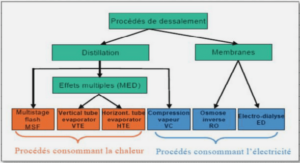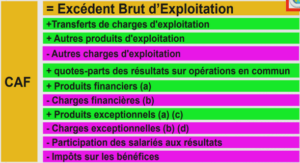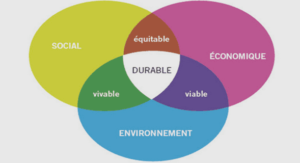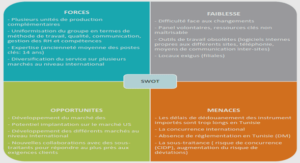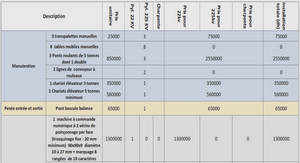This introduction is meant to serve several purposes. First, I sketch how this dissertation came about, i.e. how I originally became interested in metalinguistic discourse. Although the autobiographical details are not important as such, I believe that some idea of the genesis of such a long-term undertaking as a thesis may facilitate its appreciation and comprehension. Second, I offer a number of reasons why a study of metalanguage from a linguistic point of view can prove relevant. In particular, (i) metalinguistic utterances display a peculiar morphosyntactic and semantic behaviour ; (ii) they must be theorised if one is to be able to make acceptability judgments on the claims made by linguists themselves (most of which are metalinguistic statements) ; (iii) they provide the most straightforward illustrations of a fundamental property of natural languages, namely reflexivity. Third, I briefly outline various aspects of the research on metalanguage and reflexivity which are important in their own right but which I have not found useful for this dissertation. Though an account of the discarded approaches might seem somewhat tedious to the reader who wants to ‘get down to the business in hand’, I felt that it would be unfair, and unwise, to simply ignore a sometimes substantial scientific production that once made, or is still making, a significant contribution to the study of metalanguage. In the last section of this introduction, however, I provide a synopsis of the eight chapters that make up this dissertation.
How this dissertation came about
At the origin of this dissertation is a practical problem that I encountered while working on a translation. There were passages in the text I was translating that raised very special difficulties, of the kind that prompt some scholars to decree that translation is impossible. In the following excerpt, a blood sports expert is putting right a description of a hunting scene by a townsman :
(1) ‘My dear fellow, you can’t talk about a fox’s tail ; and as for the “dogs”, I suppose you mean the hounds ; and the “cavalry in red jackets” were huntsmen in their pink coats.’ (Toulmin 1958 : 25) .
It was soon apparent that any ‘literal’ or direct translation was to be ruled out since it is not improper in French to refer to a fox’s tail as la queue d’un renard, or to hounds as des chiens (de meute). Nor is it likely that des manteaux roses would rate as a better description of the huntsmen’s garments than des vestes rouges. It did not take a stroke of genius to realise that the difficulties originated in the fact that some terms of the townsman’s description were being talked about rather than used in their normal capacity. The reason why I could not turn out anything meaningful on the basis of the literal translation of fox’s tail or dogs had nothing to do with the scene depicted in Toulmin’s text. Instead, it had to do with the fact that lexical items in two languages, even when they are such close translational equivalents as dog and chien, do not share all of their characteristics. In this case, one is not appropriate in the particular register of blood sports, while the other is. In the end, rather than translating (1) literally, I chose to rest my French-speaking expert’s attack on French words that permitted linguistic improprieties to occur. Some of those had to be added to the description for that specific purpose.
I had ‘discovered’ that something which I faintly recognised as ‘metalinguistic use’, a term whose meaning and ramifications were very vague to me then, ‘blocked’ translation. Thinking the idea worth pursuing, I decided to write a dissertation on metalanguage from the vantage point of translation theory. It soon turned out that the literature of the field made only few allusions to metalanguage. When it did, that was often in connection with Jakobson’s model of verbal communication (see Jakobson 1981a, 1985b), which associates a ‘language function’ (emotive, conative, referential, poetic, phatic, metalingual) to each of the six constitutive factors of every speech event (addresser, addressee, context, message, contact, code). Translation theorists, however, have tended not to use the model to theorise straightforward metalinguistic utterances such as (1) or (a) — where words, or, more broadly, language is the topic of discussion. Rather, they have tended to apply it to indirect metalinguistic processes, as take place notably in wordplay (e.g. Delabastita 1993, 1997).
It is true that puns appear to block literal translation just as much as straightforward metalinguistic utterances do :
(2) We sported bellhop costumes for our Hamlet skit ; should, we pondered in unison and song, the package be delivered to, I kid you not, “2b or not 2b.” (Carter 1991 : 90) .
Although literal translation would yield a perfectly understandable grammatical sentence, its relevance would be likely to escape readers : what can be so funny about whether the parcel will be delivered au numéro 2b ou pas ? The only cause of merriment would be the odd bilingual reader’s recognition of the underlying pun and of the translator’s incompetence.
In spite of Delabastita’s valuable investigations into the translation of wordplay, it became clear that translation theory would not provide me with the tools necessary for an in-depth understanding of what I thought should be dealt with first, namely plain statements about language. In this respect, the two detailed treatments of metalanguage that I came across in the literature proved unable to help. The first, Chapter VII of Vinay & Darbelnet’s now classic Stylistique comparée du français et de l’anglais, is devoted to “adaptation and issues of metalinguistics”. Unfortunately, Vinay & Darbelnet understand the latter term in the sense that it used to have in American ethnolinguistics, i.e. “the links between a language and the set of social and cultural activities of a given ethnic group” (1977 : 259), a sense that is of no relevance to my research. The second is the chapter that Peter Newmark devotes to “Translation and the metalingual function of language” in his Approaches to Translation. Although he offers a series of useful warnings and guidelines, Newmark is content with an intuitive and pretheoretical understanding of the subject. For instance, he fails to explain on what grounds he can lump together under the metalingual function both wordplay and an “English grammar for German linguists” (1981 : 105), even though it is likely that the metalinguistic mechanisms involved in each could be at least partly different.
After I had come to the conclusion that translation studies fell short of my expectations, I similarly realised that Jakobson’s contribution, however popular it has become, was repetitive and narrow in scope : Jakobson never fully developed a concept which remained largely embryonic throughout his academic career, in spite of the programmatic appeal he launched in 1956 : Finally, the urgent task which faces the science of language, a systematic analysis of lexical and grammatical meanings, must begin by approaching metalanguage as an innermost linguistic problem. (1985b : 121) .
In the field of linguistics proper, the scholar who has come closest to completing that preliminary task is Josette Rey-Debove, with her Le Métalangage (1978), one of the few linguistics publications chiefly devoted to reflexivity in language. The only booklength studies published since, John Lucy’s Reflexive Language (1993) and Jacqueline Authier-Revuz’s Ces mots qui ne vont pas de soi (1995) are less concerned with the basic syntactic, lexical and semantic problems raised by metalanguage, and, to my knowledge, Rey-Debove’s book remains the only one that attempts to make sense of all the basics of the subject.
INTRODUCTION |

